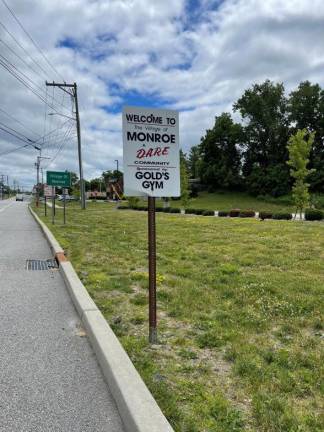Dare to talk about drugs?
Education. Local schools say no to D.A.R.E., and incorporate evidence-based programs to supplement health classes. But after two years of hybrid learning, Orange County school districts struggled with increased substance use on campus, and saw over a dozen student hospitalizations in the 2021-2022 school year.

When it comes to teaching kids about drugs, parents who attended elementary school in the 80s and 90s will likely recall Project D.A.R.E. (Drug Abuse Resistance Education). A local police officer would come in weekly for a few months during the school year to teach fifth or sixth grade students about the risks of substance use, and how to say no to drugs.
“The good part about D.A.R.E. was that police officers built better relationships with kids, that was a great outcome,” said Tina Aue, the director of prevention at the Center for Prevention and Counseling. “But the prevention piece: if you look at the research, maybe not so much.”
A new era in drug education
Today, local schools are providing a combination of anti-drug education to their students. In addition to the state standards that require health class to teach kids about drugs, alcohol and tobacco, schools also turn to local organizations for programming.
Goshen Central School District, for example, now partners with the Alcohol and Drug Abuse Council (ADAC) of Orange County and Project Hope. About 70% of Sussex County, NJ, schools receive programming from the Center for Prevention. Many, including Lafayette, Sussex and Wantage, also participate in the L.E.A.D. (Law Enforcement Against Drugs) program, which replaced D.A.R.E. in the county and is run by the sheriff’s office.
“We have a ton of different programs,” said Eric Hassler, Monroe-Woodbury Central School District’s assistant superintendent for Curriculum and Instruction. In the elementary school, students draw anti-drug posters and submit them into a contest with the ADAC each year. In high school, P.E. classes take a day to bring in drunk goggles to teach students about the dangers of driving while intoxicated.
“I think there’s never one sort of message in isolation that is effective... it needs to be a consistent practice that’s presented to kids in a variety of different ways,” added Hassler. “They hear it in assemblies, or they hear it in a poster contest, or they hear it directly in health class that they take. I think it takes all of those things for us to do as much as we possibly can to get the message across.”
Both the ADAC and the Center for Prevention believe anti-drug education should start young, and bolster mental, social, and emotional health in students.
Six districts in Orange County incorporate the ADAC’s “Too Good for Drugs and Violence” program, which is available for K-12 grade levels.
“We want to reduce risk factors by increasing protective factors,” explained ADAC Prevention Coordinator MaryAlice Kovatch. “So with the evidence-based program, it focuses on things like goal setting, decision making, communication skills, being able to recognize and manage emotions, verbalize feelings, anger management, respect for self and others, [and] conflict resolution.”
The Center for Prevention’s early education programs also work to teach social and emotional skills. “Because, really, that’s the foundation... they need to be able to problem solve, they need to be able to address their feelings, and know how to make positive decisions.”
Age-appropriate discussions about drugs, alcohol and tobacco are then folded into these lessons. “It’s so much more than just a message of, ‘Don’t do drugs. Drugs are bad,’” said Kovatch. “It’s, ‘These are the harmful effects of substances. These are the these are the things that can happen to you...’ We want to build resilience in youth. And this program is designed to do just that.”
An increase in use
Meanwhile, with the legalization of recreational marijuana — and after going through a year of hybrid learning — Orange County districts struggled with students vaping synthetic marijuana in school last year. In the spring, there were at least 15 instances in Orange County that sent local students to urgent care or the emergency room.
“We’re trying to pump as much education in as we possibly can,” said Goshen Superintendent Kurtis Kotes in May, after two middle school students were hospitalized. He estimated that the 2021-2022 school year saw five times as many students suspended for using or being in possession of substances this year.
And at the ADAC, demand for the organization’s “Teen Intervene” program “exploded,” said Kovatch. The adolescent attends a few sessions with the ADAC over the course of three to four weeks, and his or her suspension is shortened in return.
“We definitely did see an increase in the demand for that particular program,” said Kovatch. “And just the educational presentations that we do regularly.”